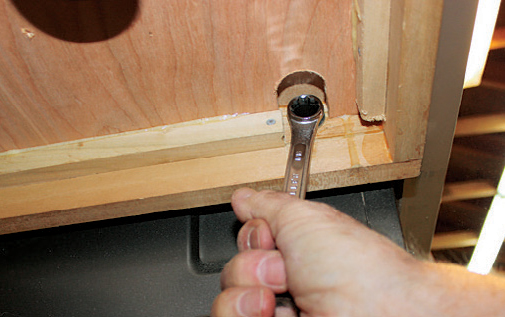
I have seen large tabletops with through bolts across the width. Can this procedure withhold the wood from normal expansion and contraction, and is this an acceptable practice?
Andy Rae: Nothing stops wood movement. Although bolts can limit the amount of expansion, the wood still moves and ends up compressing itself against the heads or nuts of the unmoving bolts. When the wood inevitably shrinks, the bolts will need tightening due to the compressed wood fibers that don’t spring back. Adding bolts through wide panels is suitable for work that will experience a lot of stress (think bowling alleys), but pointless in tabletops and other furniture-type panels where a well-prepared edge-to-edge glue joint does just fine, thank you very much.
Kevin Hancock: The wood is still going to move, just with more resistance. Over time, you may see compression ridges in the surface.
Richard Jones: The wood will still want to expand and contract in service. In my experience, this is used primarily as a clamping-up technique. Once the glue is dried, the nuts can be removed, or at least loosened to allow for movement across the grain. Leaving them tight can lead to localized crushing of the fibres.
John Brock: No and no. I can’t think of a faster way to destroy a nice tabletop than to bind it up with steel. Wood fibers HAVE to swell (or be crushed) as they pick up moisture.





